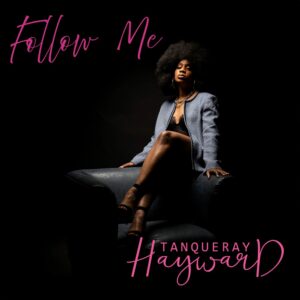The history of modern soul music is unfortunately littered with stories of truly magnificent artists who spent much of their adult lives fighting personal demons while creating seminal music. Phyllis Hyman is, sadly, one of those stories. The Philadelphia native was a popular jazz club singer in New York when hot producer Norman Connors witnessed her show and pegged her to perform a cover of the Stylistics’ “Betcha By Golly Wow” on his You Are My Starship album. Her emotive, jazzy stylings melded perfectly with Connors’ production, and her stunning performance resulted in her being signed by Buddah Records for a 1977 self-titled solo debut.
Her first album was a moderate success, and included a very nice cover of the Spinners’ “I Don’t Want To Lose You.” The next year Buddah merged into Arista Records and Hyman embarked on a series of albums that scored well in the emerging urban adult contemporary format, but with little crossover success. The material provided to her during this period was somewhat uneven, but on each album she demonstrated that she was developing into one of the finest soul vocalists in the world. And while she was not a “singles” artist, she recorded her share of memorable radio cuts, including “You Know How to Love Me,” “Riding the Tiger,” “Can’t We Fall In Love Again” (with Michael Henderson), and the dramatic “Somewhere In My Lifetime” (produced by, of all people, Arista stablemate Barry Manilow). She also emerged as a fine concert performer, and became a headliner in multi-artist soul shows around the world.
Mutual dissatisfaction between Hyman and Arista led to her contract not being renewed in 1982. She instead spent her time guesting on other artists’ albums and performing on stage. It would be four years before she would record again, going back home and signing with Gamble & Huff’s Philadelphia International Records, a label known for the kind of lush production and strong material that appeared perfect for Hyman. The match worked beautifully out of the box. She scored immediately with her greatest album, 1987’s Living All Alone, a wonderful collaboration with both Gamble & Huff and the great Thom Bell. The first single from that album was “Old Friend,” a Thom Bell/Linda Creed piano ballad that was perhaps the year’s most beautiful soul recording, and a cut that fit Hyman like a glove. It is truly an essential track for any soul ballad lover. The album’s other highlight was the moody title song, a haunting Gamble & Huff masterpiece. Hyman then disappeared again from the radio, as PIR changed distribution agreements, resulting in a four year wait before the release of her Nick Martinelli-produced Prime of My Life and her biggest hit, “Don’t Wanna Change the World.”
Unfortunately as she reached age 40, while she was approaching her creative peak, Hyman was increasingly facing personal problems. Alcohol dependency, weight gain and the fear of losing her fashion model-like beauty haunted her, leading to more erratic behavior. Ultimately, her personal demons overcame her, and she committed suicide before a show in 1995, shocking her legions of fans. Later that year, a posthumous album, I Refuse To Be Lonely, her final work, clearly showed lyrically the problems she was facing in her last days, though at times displaying a hope that she could escape them. Another album of unreleased PIR cuts, Forever For You, was released in 1998 and in 2004 Expansion Records issued In Between the Heartaches, with rare tracks not found elsewhere (including the much talked about “Magic Mona” from the soundtrack to The Fish That Saved Pittsburgh).
As with many great artists, Hyman has become more appreciated posthumously. Though her popularity during her life was generally limited to soul and smooth jazz audiences, her influence on a generation of songstresses, and her music has aged wonderfully, much of it sounding as engaging now as it did four decades ago.
by Chris Rizik










